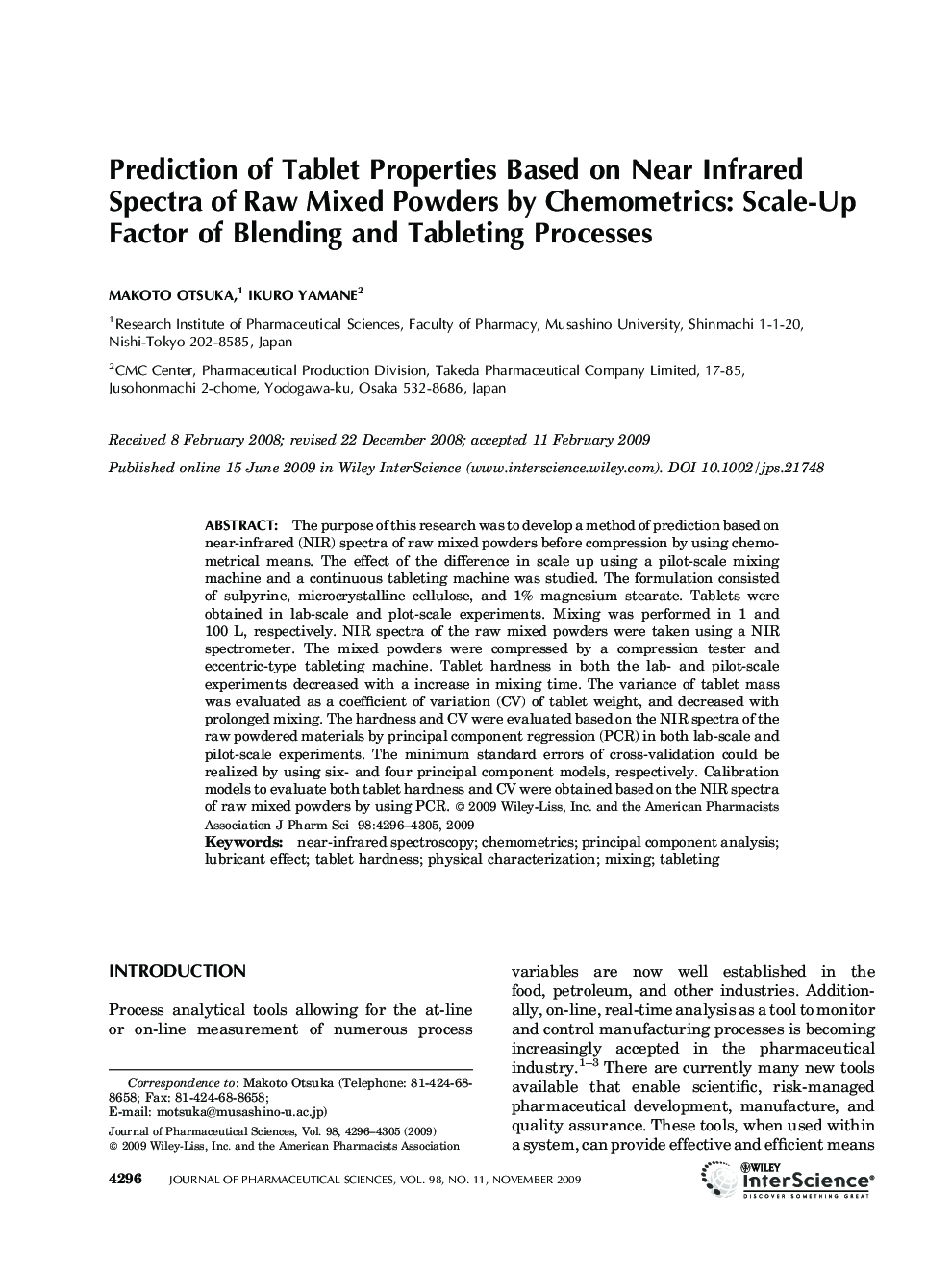| Article ID | Journal | Published Year | Pages | File Type |
|---|---|---|---|---|
| 2486960 | Journal of Pharmaceutical Sciences | 2009 | 10 Pages |
Abstract
The purpose of this research was to develop a method of prediction based on near-infrared (NIR) spectra of raw mixed powders before compression by using chemometrical means. The effect of the difference in scale up using a pilot-scale mixing machine and a continuous tableting machine was studied. The formulation consisted of sulpyrine, microcrystalline cellulose, and 1% magnesium stearate. Tablets were obtained in lab-scale and plot-scale experiments. Mixing was performed in 1 and 100 L, respectively. NIR spectra of the raw mixed powders were taken using a NIR spectrometer. The mixed powders were compressed by a compression tester and eccentric-type tableting machine. Tablet hardness in both the lab- and pilot-scale experiments decreased with a increase in mixing time. The variance of tablet mass was evaluated as a coefficient of variation (CV) of tablet weight, and decreased with prolonged mixing. The hardness and CV were evaluated based on the NIR spectra of the raw powdered materials by principal component regression (PCR) in both lab-scale and pilot-scale experiments. The minimum standard errors of cross-validation could be realized by using six- and four principal component models, respectively. Calibration models to evaluate both tablet hardness and CV were obtained based on the NIR spectra of raw mixed powders by using PCR. © 2009 Wiley-Liss, Inc. and the American Pharmacists Association J Pharm Sci 98:4296-4305, 2009
Keywords
Related Topics
Health Sciences
Pharmacology, Toxicology and Pharmaceutical Science
Drug Discovery
Authors
Makoto Otsuka, Ikuro Yamane,
